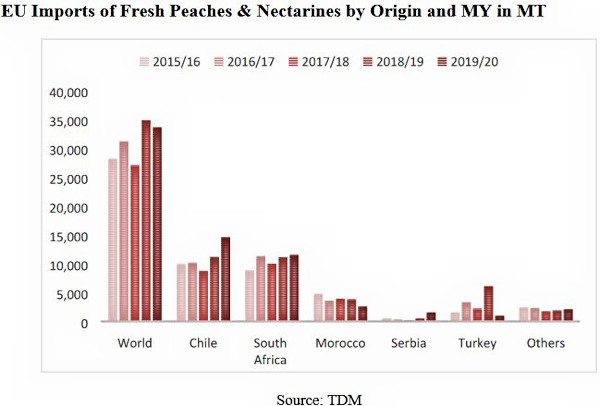In Europe, 2020 Peach and nectarine yields are expected to decline by 15%, compared to 2019. The main stone fruit growing countries in the EU expect 3.4 million tons of these fruits. This expected decline is due to the unfavorable spring weather conditions. There's also a continued decrease in planted acreage. According to the forecast, the planted area should fall to 216,550 ha this year.
EU cherry production is estimated at five percent lower - 702,700 tons. That's for the period from April 2020 to March 2021. Here too, the weather is the culprit. In 2020/2021, the total EU cherry acreage will stabilize to about 162,000 ha.

The EU exports far more peaches and nectarines than it imports. In 2019/2020, EU taxes on imported peaches and nectarines amounted to almost €66 million. That's 33,664 tons, and 3,5% less than the previous year. However, for 2020/2021, these imports are expected to rise slightly. That's due to the anticipated decrease in EU production. European countries get peaches and nectarines from Chile, South Africa, and Morocco.
In 2019/2020, EU peach and nectarine export value increased. It rose by 16% to nearly €139 million. The volume climbed by 15% to 178,939 tons. Other EU countries are the most important export destinations for these products. As are Ukraine, Belarus, and Switzerland. In 2020/2021, EU peach and nectarine exports might fall. Again, because EU production is expected to decrease.
The EU imports mostly Turkish cherries. The USA is the region's fifth-largest non-EU cherry supplier. These come mainly from the UK. In 2019/2020, British cherries' import value was estimated at €2,5 million. In the past two years, American cherry supplies to the EU have declined. That's a result of increased competition from Serbia, Chile, and Argentina.
